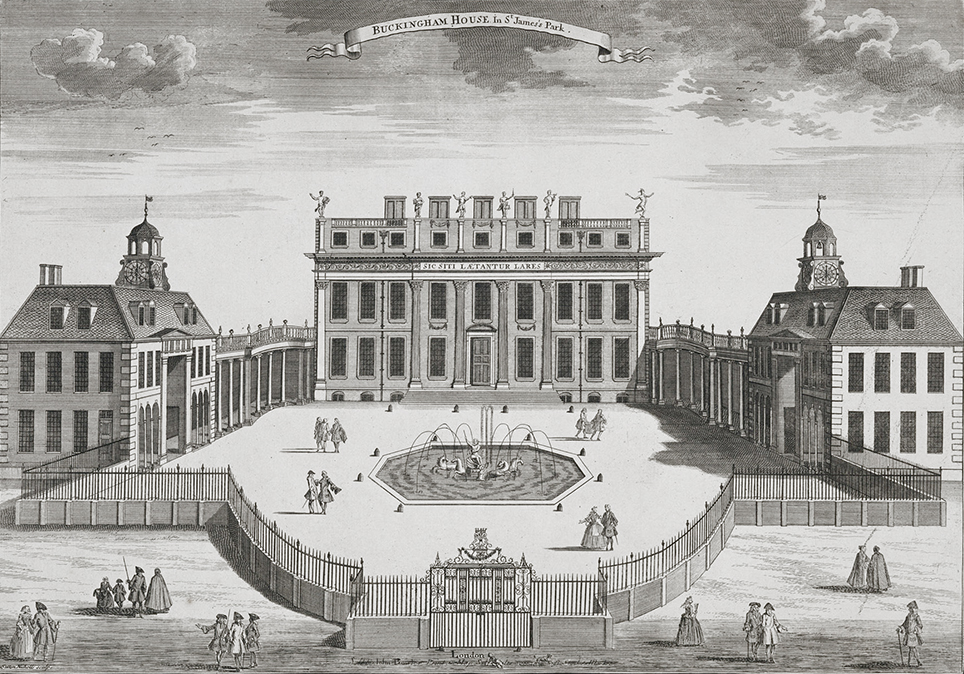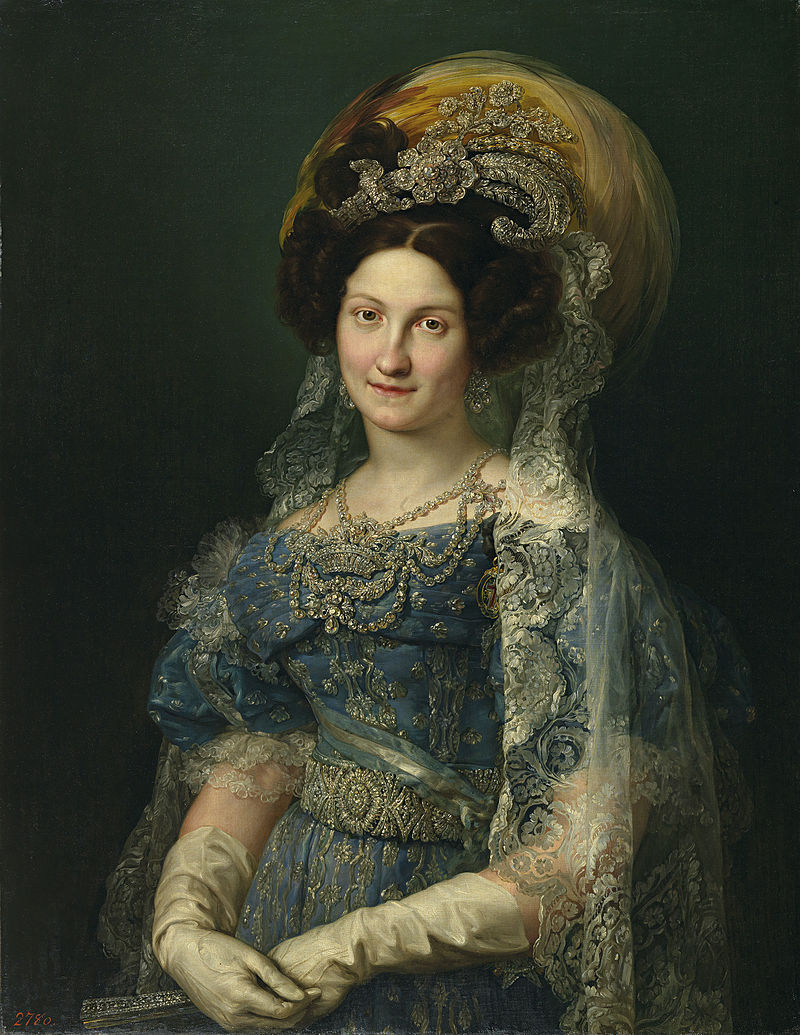© Unofficial Royalty 2024

Prince William of Gloucester: Credit – Wikipedia
August 28, 1592 – Birth of George Villiers, 1st Duke of Buckingham, favorite of King James I of England and King Charles I of England, in Brooksby, Leicestershire, England
George Villiers, 1st Duke of Buckingham, a courtier and favorite of King James I of England and his son King Charles I until a disgruntled army officer assassinated him. In 1615, George was knighted and became a Gentleman of the Bedchamber. He became Master of the Horse in 1616, was raised to the peerage as Baron Whaddon, Viscount Villiers, and was also made a Knight of the Garter. In 1619, George was made Lord High Admiral of England. In 1617, George was created Earl of Buckingham and climbed the steps of peerage when he was created Marquess of Buckingham in 1618, and Duke of Buckingham in 1623.
Unofficial Royalty: George Villiers, 1st Duke of Buckingham, favorite of King James I of England and King Charles I of England
August 28, 1667 – Birth of Louise of Mecklenburg-Güstrow, Queen of Denmark and Norway, first wife of King Frederik IV of Denmark and Norway, in Güstrow, Duchy of Mecklenburg-Güstrow, now in Mecklenburg-Vorpommern, Germany
Louise grew up at her father’s modest court at Güstrow Castle. Her parents were adherents to Pietism, a movement that originated in the Lutheran Church in the 17th century that stressed personal piety over religious formality and orthodoxy. In 1695, Louise married the future Frederik IV, King of Denmark and Norway. Louise and Frederik had four sons and one daughter. Sadly, three sons died in infancy. Louise found it difficult to endure her husband’s infidelities and even worse, his two bigamous marriages. At times, Louise reproached her husband which often led to embarrassing situations at court. It is suspected that Louise’s deep religiousness was also an escape from her disappointing marriage. Louise took part in the official court life and fulfilled her ceremonial duties. Otherwise, she led a withdrawn and quiet life. Queen Louise died on March 15, 1721, aged 53, at Charlottenborg Palace in Copenhagen, Denmark.
Unofficial Royalty: Louise of Mecklenburg-Güstrow, Queen of Denmark and Norway
August 28, 1676 – Birth of Isabel Stuart at St. James’s Palace in London, England
Isabel was the second of the seven children and the second of the five daughters of the future King James II of England, who was then Duke of York, and his second wife Maria Beatrice of Modena. Isabel’s mother Maria Beatrice had twelve pregnancies and gave birth to seven live children, four of whom died in infancy. To her father James, this seemed a repeat of his first marriage to Lady Anne Hyde when six of their eight children died young. Only the last two of Isabel’s six siblings survived childhood. For most of her short life, Isabel was her parents’ only child and was fourth in line to the throne behind her father and her elder half-sisters Mary and Anne from her father’s first marriage. Isabel died on March 2, 1681, five months before her fifth birthday, at St. James’s Palace in London while her parents were still in Scotland. Her father regretted that he “could not have the satisfaction of seeing and assisting her in her sickness.” When he was King James II of England, he named the royal yacht Isabella in her memory. Her mother consoled herself with “thoughts that I have more angels to pray for me.”
Unofficial Royalty: Isabel Stuart
August 28, 1691 – Birth of Elisabeth Christine of Brunswick-Wolfenbüttel, wife of Karl VI, Holy Roman Emperor, in Brunswick, then located in the Duchy of Brunswick-Lüneburg, now in the German state of Lower Saxony
Elisabeth Christine was the eldest of the four children, all daughters, of Ludwig Rudolf, Duke of Brunswick-Wolfenbüttel. In 1708, she married the future Karl VI, Holy Roman Emperor. Elisabeth Christine and Karl had one son who died in infancy and three daughters, with one dying in childhood. including Maria Theresa of Austria, in her own right Archduchess of Austria, and Queen of Hungary, Croatia, and Bohemia because she succeeded to her father’s Habsburg hereditary lands. In 1740, at the age of 55, Elisabeth Christine’s husband Karl VI, Holy Roman Emperor died after a ten-day illness. His symptoms were typical of death cap mushroom poisoning but the definitive cause of Karl’s death remains unknown. Elisabeth Christine survived her husband by ten years, dying, aged 59, in Vienna, Austria, on December 21, 1750.
Unofficial Royalty: Elisabeth Christine of Brunswick-Wolfenbüttel, Holy Roman Empress
August 28, 1779 – Birth of Antoinette of Saxe-Coburg-Saalfeld, Duchess of Württemberg in Coburg, Duchy of Saxe-Coburg-Saalfeld, now in Bavaria, Germany
Full name: Antoinette Ernestine Amalie
Antoinette was the sister of Leopold I, the first King of the Belgians and an aunt to both Queen Victoria of the United Kingdom and her husband Prince Albert of Saxe-Coburg and Gotha. In 1798, Antoinette married Duke Alexander of Württemberg whose brother Friedrich would become the first King of Württemberg. Antoinette and her husband had five children including Marie who would become the second wife of her maternal uncle Ernst I, Duke of Saxe-Coburg and Gotha. Antoinette died from erysipelas, a bacterial infection of the superficial layer of the skin, at the age of 44 on March 14, 1824, in St. Petersburg, Russia.
Unofficial Royalty: Antoinette of Saxe-Coburg-Saalfeld, Duchess of Württemberg
August 28, 1789 – Birth of Stéphanie de Beauharnais, wife of Karl, Grand Duke of Baden, at the Palace of Versailles in Versailles, France
Full name: Stéphanie Louise Adrienne
Stéphanie was from the same family as the first husband of Napoleon’s wife Josephine, Alexandre, Vicomte de Beauharnais. Alexandre had been guillotined during the French Revolution. After the death of Stéphanie’s mother, Napoléon brought her to Paris and placed her under the care of his wife Joséphine. After becoming Emperor in 1804, Napoléon sought to strengthen alliances with several of the European dynasties by arranging several marriages of his extended family. One of these marriages was between Stéphanie and the future Karl I, Grand Duke of Baden. Before the marriage, Napoléon adopted Stéphanie and elevated her to an Imperial Highness and French Princess. Through the marriages of her children, Stéphanie’s descendants include the former Kings of Romania and Yugoslavia, as well as the royal families of Belgium, Luxembourg, and Monaco.
Unofficial Royalty: Stéphanie de Beauharnais, Grand Duchess of Baden
August 28, 1814 – Birth of Susanna Innes-Ker, Duchess of Roxburghe, Lady of the Bedchamber to Queen Victoria, in Heningford, Yorkshire, England
Born Susanna Stephania Dalbiac, she was the daughter of Lieutenant-General Sir James Dalbiac, a British Army officer and Member of Parliament. She married James Innes-Ker, 6th Duke of Roxburghe.
Unofficial Royalty: Susanna Innes-Ker, Duchess of Roxburghe
August 28, 1853 – Birth of Prince Franz I of Liechtenstein at Schloss Liechtenstein near Vienna, Austria
Full name: Franz de Paula Maria Karl August
In 1914, Franz met Elisabeth von Gutmann, the widow of the Hungarian Baron Géza Erős of Bethlenfalva. The couple wanted to marry in 1919 but Franz’s brother Johann II, Prince of Liechtenstein refused to consent to the marriage because of Elsa’s lower social status and Jewish background, although she had converted to Catholicism before her first marriage. Elsa and Franz secretly married in 1919, and that same year, Pope Benedict XV received the couple at the Vatican. Johann II died in 1929, and as he was unmarried with no children, his only brother succeeded to the throne as Franz I, Prince of Liechtenstein. Now that Franz was the Sovereign Prince, he could officially marry Elsa. Their marriage was childless and upon Franz’s death, he was succeeded by his great-nephew, Franz Josef II, Prince of Liechtenstein.
Unofficial Royalty: Prince Franz I of Liechtenstein
August 28, 1895 – Death of Elisabeth Anna of Prussia, Hereditary Grand Duchess of Oldenburg, first wife of the future Friedrich August II, Grand Duke of Oldenburg, in Fulda, Kingdom of Prussia, now in Hesse, Germany; buried in the Ducal Mausoleum in St. Gertrude’s Cemetery in Oldenburg, Grand Duchy of Oldenburg, now in Lower Saxony, Germany
In 1878, Elisabeth Anna married the future Friedrich August II, Grand Duke of Oldenburg but she died before he became Grand Duke. The couple was married in a double wedding, along with Princess Charlotte of Prussia and Bernhard, Hereditary Prince of Saxe-Meiningen. Elisabeth Anne and Friedrich had two daughters.
Unofficial Royalty: Elisabeth Anna of Prussia, Hereditary Grand Duchess of Oldenburg
August 28, 1941 – Birth of Baroness Sybille de Selys Longchamps Boël, former mistress of Albert II, King of the Belgians
Baroness Sybille de Selys Longchamps was the mistress of the future King Albert II of the Belgians from the mid-1960s until the early 1980s. Their child, Delphine Boël, now Her Royal Highness Princess Delphine of Belgium, is well-known for pursuing legal acknowledgment of her parentage. This was finally received in early 2020.
Unofficial Royalty: Baroness Sybille de Selys Longchamps Boël, Mistress of Albert II, King of the Belgians
August 28, 1942 – Death of Archduke Giuseppe Ferdinando of Austria in Vienna, Austria, pretender to the Grand Ducal Throne of Tuscany; buried in the Imperial Crypt at the Capuchin Church in Vienna, Austria
Archduke Giuseppe Ferdinando of Austria was the Pretender to the Grand Ducal Throne of Tuscany from 1908 until 1921 when he married unequally and was forced to renounce his rights.
Unofficial Royalty: Archduke Giuseppe Ferdinando of Austria
August 28, 1943 – Death of Tsar Boris III of Bulgaria at Sofia, Bulgaria; originally buried at Rila Monastery in Rila, Bulgaria, re-buried in the courtyard of the Vrana Palace during the Communist regime, at a later date the Communist regime moved the coffin to an unknown location
Boris was the Tsar of the Kingdom of Bulgaria from 1918 until his death. In 1930, he married Princess Giovanna of Italy and the couple had two children. With the outbreak of World War II, Boris tried to retain Bulgaria’s neutrality. After the threat of a German invasion, and with the promise of regaining territory formerly ceded to Greece, Boris signed a treaty aligning Bulgaria with the Axis powers. In 1941, Boris signed into law the Law for Protection of the Nation, which imposed restrictions on Jewish Bulgarians. Despite signing the law, Boris helped to prevent the forced deportation of the Bulgarian Jews. In August 1943, Boris was summoned to a meeting with Hitler, who wanted Boris to deport Bulgarian Jews, and to declare war on Russia – both of which Boris strongly refused to do, making Hitler furious. Just weeks later, 49-year-old Boris died. The circumstances of his death remain mysterious, with many believing that Boris had been poisoned because of his refusal to concede to the demands of the Nazis.
Unofficial Royalty: Tsar Boris III of Bulgaria
August 28, 1972 – Death of Prince William of Gloucester in an airplane accident at an air show at Halfpenny Green, near Wolverhampton, England; buried at Royal Burial Grounds, Frogmore in Windsor, England
Prince William was the first cousin of Queen Elizabeth II and brother of the current Duke of Gloucester. William would have been Duke of Gloucester had he lived. He was a licensed pilot, owned several airplanes, and enjoyed competing in air shows. On August 28, 1972, the prince planned on competing at the Goodyear International Air Trophy races at Halfpenny Green, near Wolverhampton, England. Express and Star photographer Ray Bradbury, an eyewitness, described what happened: “I saw Prince William’s Piper, number 66, and another Piper, number 69, take off. Number 69 appeared to get airborne before the prince. Then it seemed he was in some sort kind of trouble. He banked to port. It looked as though the Prince might have been troubled by the other aircraft making a turn but at a higher altitude. His port wing seemed to hit the trees and he disappeared from view. Then there was an explosion.”
Unofficial Royalty: Prince William of Gloucester
Unofficial Royalty: Tragedy in the British Royal Family at the End of August
This article is the intellectual property of Unofficial Royalty and is NOT TO BE COPIED, EDITED, OR POSTED IN ANY FORM ON ANOTHER WEBSITE under any circumstances. It is permissible to use a link that directs to Unofficial Royalty.

























